Too many cooks will spoil just about anything, but when it comes to email it’s not uncommon to have anywhere from five to fifty people involved in hitting send. From version control, to design standards, to typos, to legal approval… getting everyone on the same page for each campaign is a headache at least, a nightmare at worst.
Thankfully, Mailjet made it their mission to finally make that process better. They built a pretty rad set of features to let you and your team work on templates at the same time, in the same space. We caught up with them last month to talk about how they’re bringing a bit of Google-doc-style magic into the ESP space.
What makes Mailjet’s new features particularly valuable to customers?
The ability to just be editing content much faster as opposed to having to work through the building process outside the ESP. Building content within the ESP is something we heard a lot of customers talking about, as well as the permissions element — that if there is one person responsible for hitting send, making sure that nobody else can jump in and actually send out the wrong email at the wrong time. Our collaboration toolkit solves those problems.
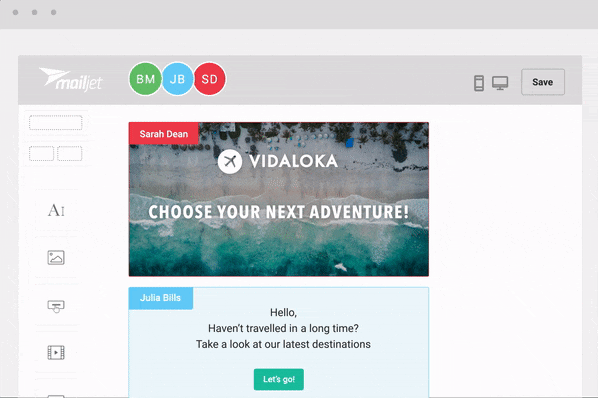
How do your collaboration features work?
Starting with the basics, there’s the sharing of the accounts.
To start, as the owner of an email, I have the right to change anything. I can access anything, I can invite people, and I can manage their role and decide exactly what they can access and do in my account.
When you invite someone in your Mailjet account you can choose among different roles such as manager, developer, marketer, designer, etc. but you can also just customize exactly the permissions that the user will have. For example, you might not want to give a designer access to stats or maybe you just want to give management access to the account team version.
When you invite someone into a campaign, do they have to create an account or does it generate some sort of url?
When you invite someone, you just share your account with that person, and you decide to what extent you want to share. So, do you want to share a transactional part? Yes or no. And inside that part, do you want that person to be able to edit the template? Yes or no. To be able to send transactional templates or to send marketing emails? Really, you can decide at a very granular level what this person will be able to see, to access, and to do.
So, it starts with detailed permission settings?
Yes. As the owner, I can give a user access to campaigns, but she can only edit templates. She can’t publish templates. And that’s very important because we created a real distinction between drafts and published templates. That way all users can work without any stress and iterate on templates without them being published. And we can choose the people within the company who have the right to publish those templates.
So, you can’t use a template that hasn’t been published before. This is really useful to make sure you don’t send anything that hasn’t been approved by the right people.
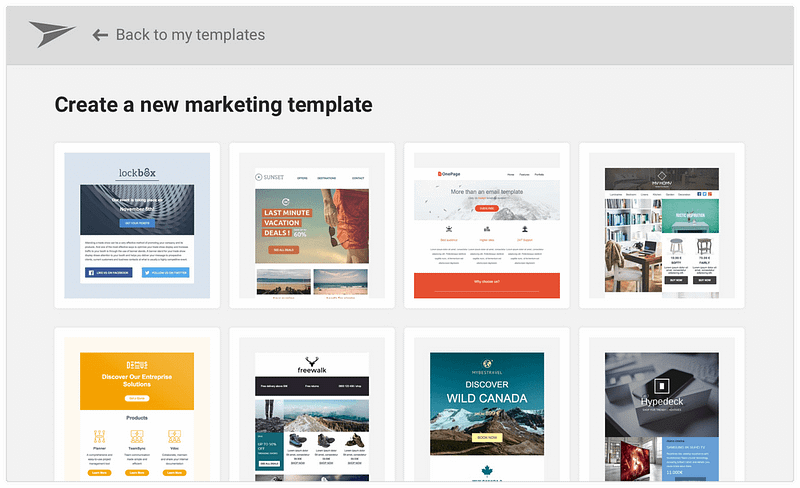
How are templates organized? How does that feature work?
We built our template library to keep things organized. We have a lot of customers that have hundreds of templates, and it’s really hard and time consuming to find the right templates. We decided to implement labels to make sure they can easily organize all of their templates. It detects automatically the language of the template, so if it’s a multinational company you can just say, “Okay, I want all the French templates,” or “I want the English templates,” and so on. Of course, can sort by the date, the most recently created, etc. But really the idea here is is that you can find in one click the email that you need.
Importantly, you can create as many labels as you want, and they’re very different from files. Other ESPs have folders. Here you can assign multiple labels to one template, so it’s way easier to classify all of your templates.
When looking at the interface, you see drafts and published templates. So, only published templates will be available for anyone that has the right to send a campaign. They will only be able to choose amongst the published templates, so you are 100% sure that those had been evaluated.
That’s cool! How about when people are trying to build new templates or campaigns together?
That’s where our realtime collaboration feature comes in! The idea here is that usually you’re not alone working on all your email templates. We wanted to ease the process and the teamwork related to email. So, we made a feature to allow people to work on templates together in real time.
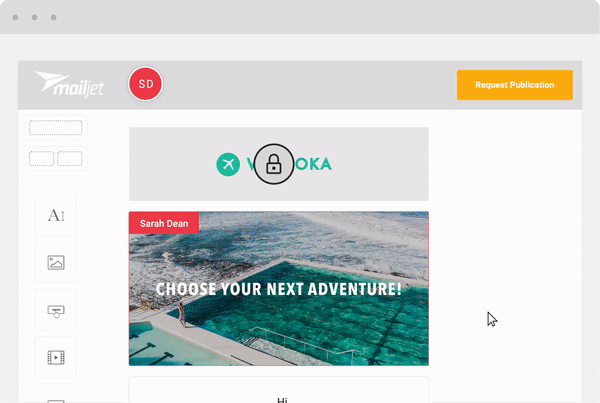
Here’s why that’s great: let’s say that Maria wants to change a section. If I’m looking at the same template (as the owner), I know exactly what Maria is doing. I can see in real time which section she is working on and if she is changing something it’s happening in real time.
Another really cool feature to support teams working in real time is the comment feature. In our intuitive e-mail editor, you can add and reply to comments on specific sections. Basically, that’s exactly what you see everyday on Google docs. But the real time part and the commenting part are the exact same concept, but applied to emailing. So, you can ask questions, you can add notes, and you can resolve comments. You’ll also have a record of all the comments that were made on the templates under a “resolved section.”
It saves so much time being able to comment directly on the e-mail so that you can see exactly what the comment is referring to. You don’t have to ping them in a different app, or email them trying to explain what changes you want to make. It all happens clearly and easily within the email builder.
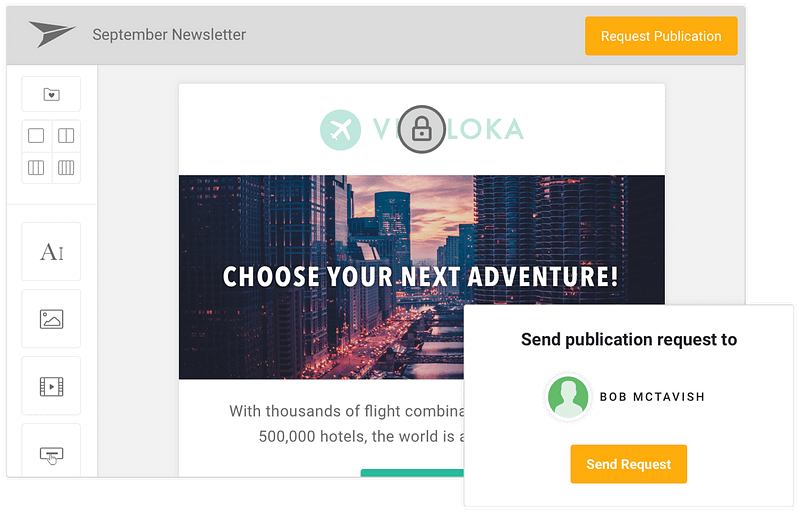
Awesome! What else have you come up with to streamline email processes?
When you need to do a batch update, for example, you need an easy solution to do this. You don’t want to have to open 100 templates and update them all. We realized that a lot of the sections are actually the same in every email template. The footer, for example, is pretty much the same in all emails, and sometimes you just want to update a year or an address, and you have to do this like 100 times for every template.
So, to save time, we created “linked sections” that you can edit and drag and drop. It means that if I decide to edit the footer, I only have to do it once. I can make the edit, click save and apply, and it will be applied in one click to all of the templates to which it is linked. So if it’s linked to 100 templates, I can update in one click the footer of every one of those templates.
So, if this footer is in an ongoing trigger campaign, with an update, it will go out on the next trigger sent!
When it comes to design and protecting your brand image, you need to make sure that your logo, your guidelines, colors, styles are respected. And for that we created what we called “locked sections.” So you can decide to lock the full section, or you can decide just to lock the text and image, or just lock the style. Basically I will allow other users to edit the text, but the text will always look the same. So, I’m 100% sure that the guidelines will be respected in all emails. It’s great because when you have different styles and a lot of templates, you don’t want to have to check everything. This allows you to be stress-free when giving access to interns that might not know the guidelines very well.
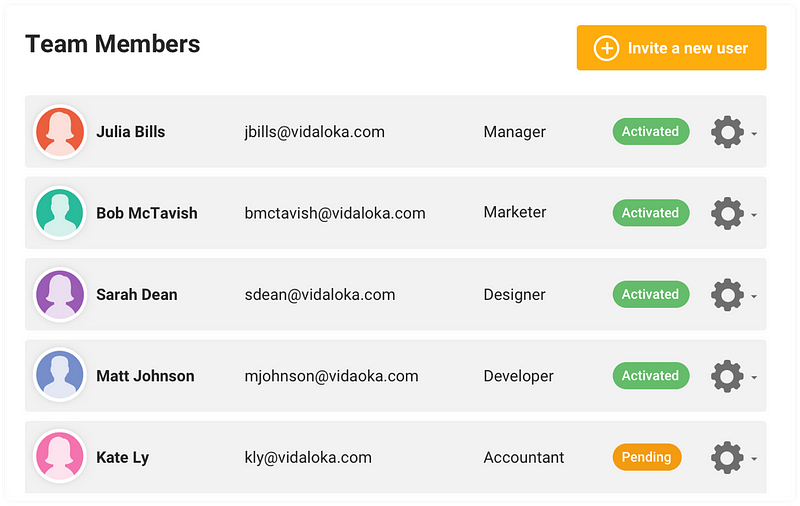

What about the publication process itself? What features have you added to make that work better?
When someone has been editing templates and is ready to send the email, they can request publication. You can restrict user rights so that certain users are not allowed to publish templates, but they can work on them and then can request publication from someone that has the right to publish.
When a use clicks “request to publish,” she can select who to send the request to and include a note. If she sent it to me, I would get the notice, and I will have the choice to reject (and maybe add comments about why), or I can publish the template. Once I publish the template, it will be available in the gallery for anyone to use it for a campaign. If we’re talking transactional email, once you publish a template, this version is used by the API, so it can be sent right away to the next customer.
How did these collaboration tools come into being? How did you approach this problem?
We realized that it’s very rare that someone works alone on everything related to email. So, at some point, you need someone to approve something. At some point, you need to ask a designer to design a template for you, or an agency. It really depends on the company structure, obviously, but the processes are heavy. And emailing, it’s really a domain where there is not so much innovation when it comes to easing the way it works and the processes.
I mean, Google Docs has existed for a long time. Live chats have been around. All of us, in any company, we are used to collaborating on a daily basis except when it comes to email. At Mailjet, we realized that. We realized there was a need, and we wanted to build a set of tools and features to make sure we ease pretty much each part — from the creation to the sending.
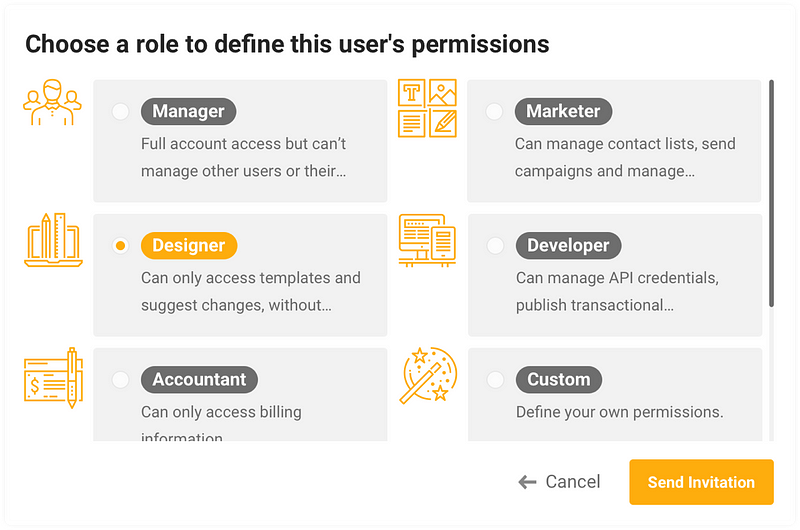
Who is this set of tools most useful for?
We have a variety of types of customers — from very big companies such as Microsoft to small ones — that have very different ways of working on email. But we conducted some interviews. We had a lot of feedback from them, and honestly everyone gains and will save time if they are able to work together in real time.
Something quite cool about this for us is that essentially, you’ve got developers working on email, you’ve got marketers working on email, and everyone in between. And they often use different platforms. So, the DNA of Mailjet was really an email platform that lets everybody work on email, the way they want, together.
Did you get any data team sizes?
We did a lot of interviews with people, and we actually complemented that with qualitative research. So, we did a 400 person marketer research study to ask how many people are you really working with on email? And what are your pain points? And at what point does the collaboration get tough? What came out of the study was an acknowledgment that marketing teams are growing and in fact on average a campaign involves 11 people and goes through 5 different iterations. The point where collaboration gets especially complicated is actually with 10 people, so we wanted to come in and help solve some of the pain points related to this, which includes miscommunication, errors going unnoticed, and duplicated efforts.
A main thing that we did in our study — we were trying to understand how teams sizes are growing. And we’re seeing that marketing teams are growing over the last two years. So, this is going to continue to be a pain point.
Is there a way to track changes across those templates?
In each template, you can see exactly all the versions that were created. So you don’t have to duplicate to change something on a template, you just iterate directly on it to create a v2. And you know exactly who did what edit.
In terms of inviting people for the approval process, is that priced on a seat by seat basis? How does that work?
It depends on the plan chosen by their users. We have a self-service plan, and for that structure they have 3 accesses, 3 users included in the plan. And then 4, 5, up to five users for the self-service plans. Now for the custom plan. Yes, it’s priced per user. But it’s a small price, and you get a volume discount the more people you add.
Promo code REALLYGOOD can be applied at checkout for access to the Bronze Premium Plan.


Post a Comment
Note: Only a member of this blog may post a comment.